For home cooks and spice enthusiasts seeking the perfect heat-sweet balance, this guide delivers five science-based techniques to master habanero pineapple salsa. You'll gain actionable strategies to transform potentially overwhelming heat into a complex, crowd-pleasing flavor experience—without compromising on fiery excitement.
Table of Contents
- Why Habanero & Pineapple Are Meant for Each Other
- The Science Behind Spice: Capsaicin vs. Sweetness
- 5 Must-Try Flavor Pairings for Your Salsa
- Pro Tips: How to Handle Habaneros Like a Pro Chef
- Serving Suggestions That’ll Make Your Guests Ask for More
- Frequently Asked Questions
Why Habanero & Pineapple Are Meant for Each Other
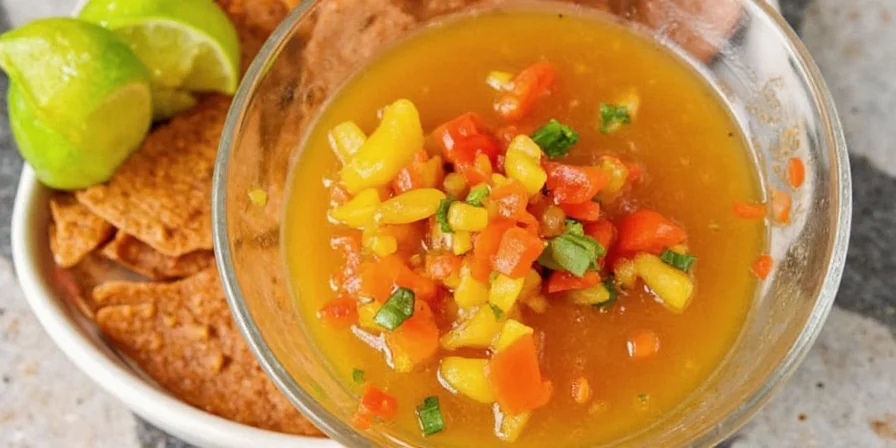
The pairing of habanero peppers and pineapple isn’t just random—it’s almost poetic. Habaneros are one of the hottest peppers on the Scoville scale, clocking in at 100,000–350,000 SHU (Scoville Heat Units), while pineapple brings natural sweetness and acidity. Together, they create a flavor contrast that can be incredibly satisfying—if done right.
Historically, this combination echoes ancient Mesoamerican culinary traditions where indigenous communities naturally paired native chilies with tropical fruits—a technique refined over centuries through practical food science before modern chemistry existed. The secret lies in understanding how to balance heat with flavor. It’s not just about making it spicy; it’s about making it tasty. Think of it like a good punchline—surprising but still satisfying.
The Science Behind Spice: Capsaicin vs. Sweetness
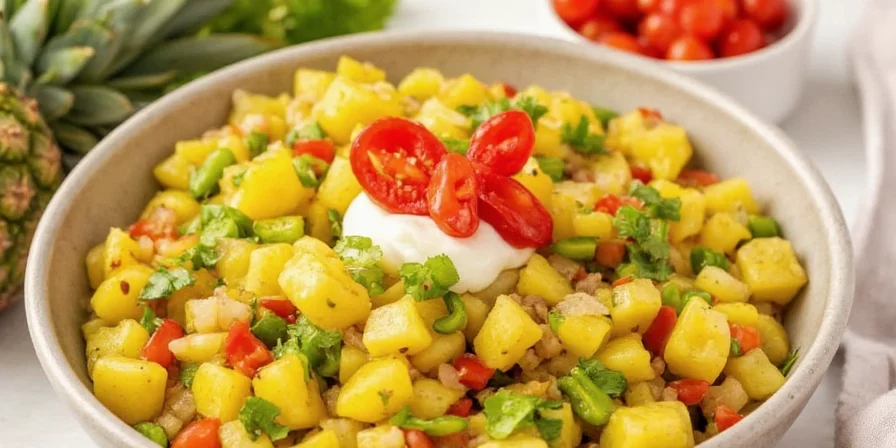
| Compound | Role | How It Affects Taste |
|---|---|---|
| Capsaicin | Heat generator | Binds to pain receptors causing a burning sensation |
| Sugar (Fructose) | Natural sweetener | Counteracts capsaicin and balances heat |
| Citric Acid | Acidic counterbalance | Adds brightness and cuts through richness |
Capsaicin is what makes habaneros so hot. It’s oil-based, which means water won’t help you cool down—but fat or sugar will. That’s where pineapple comes in: its high fructose content naturally tempers the heat, making each bite more palatable without sacrificing spice levels. This biochemical interaction creates what food scientists call "flavor layering"—where heat and sweetness amplify rather than compete with each other.
5 Must-Try Flavor Pairings for Your Salsa
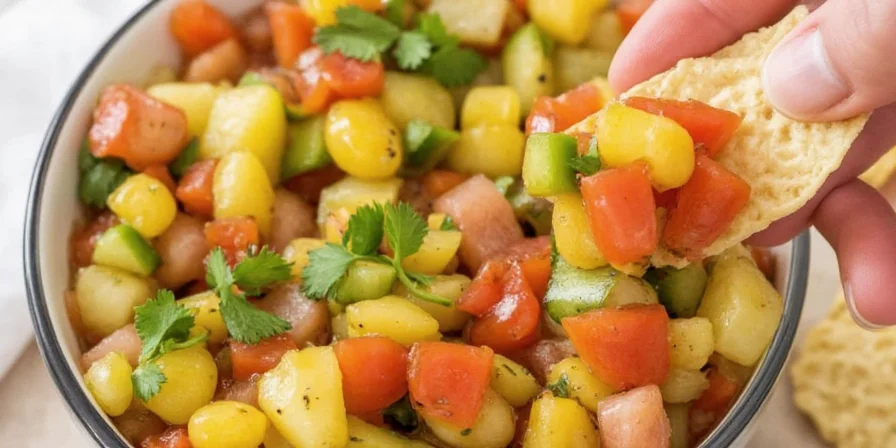
- Lime Juice: Adds a citrusy zing that brightens up the overall flavor profile. Use fresh lime juice for best results.
- Red Onion: Offers sharpness and texture. Soak slices in cold water for 10 minutes to reduce their bite.
- Jalapeño: For those who want extra heat but a different flavor note. Jalapeños bring a grassier edge compared to habanero's fruity fire.
- Fresh Cilantro: Provides a herbal freshness that cleanses the palate after each spicy bite.
- Agave Syrup: A small drizzle can go a long way in balancing extreme heat, especially if you're serving to a mixed crowd.
Pro Tips: How to Handle Habaneros Like a Pro Chef
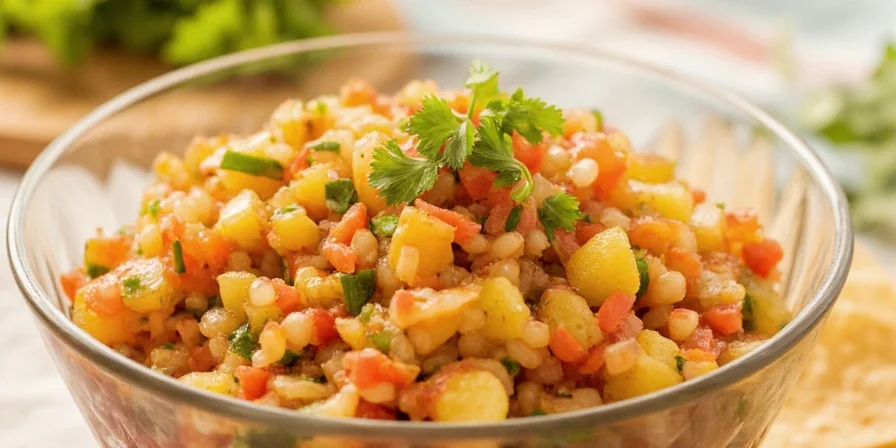
- Wear gloves! Capsaicin is oil-based and can linger on skin for hours. Trust us—your eyes will thank you later.
- Seed control: Most of the heat lives in the seeds and white membrane. Remove them gradually to fine-tune your salsa's spiciness.
- Use a stainless steel knife: Plastic cutting boards and knives can retain oils and cause cross-contamination with other ingredients.
- Pre-chill: Letting your salsa sit in the fridge for 20–30 minutes helps flavors meld together and reduces initial heat intensity slightly.
- Dairy emergency kit: Keep sour cream, yogurt, or coconut milk nearby in case someone needs to douse the flames.
Serving Suggestions That’ll Make Your Guests Ask for More
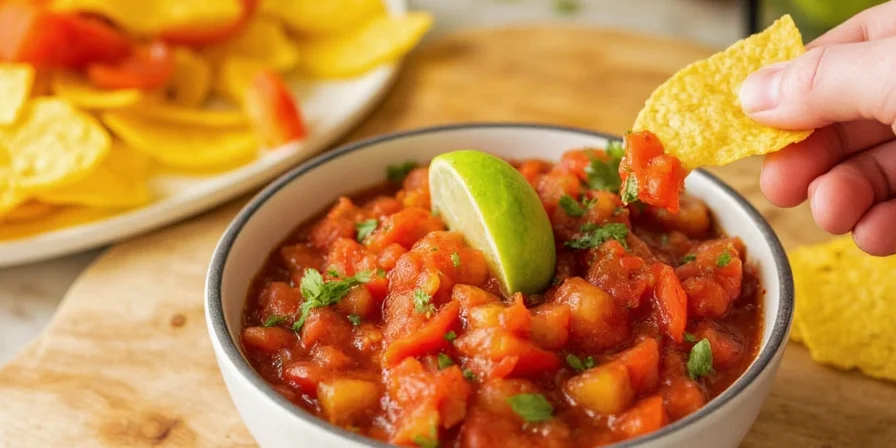
Serving habanero pineapple salsa isn’t just about scooping it with chips. Here are some creative ways to serve it and elevate your next gathering:
- Tacos: Especially grilled fish or shrimp tacos—salsas love seafood!
- Grilled meats: Spoon over steak, chicken, or pork chops for a tropical twist.
- Eggs: Try it on avocado toast with a poached egg or even scrambled eggs for a breakfast upgrade.
- Salad topping: Add a kick to leafy greens or grain bowls with a few spoonfuls.
- Pizza surprise: Swap marinara with a milder version of your salsa for a fun pizza base.
Frequently Asked Questions
How do I reduce the heat of habanero pineapple salsa after it's made?
Add more diced pineapple or a touch of agave syrup to rebalance sweetness. Dairy-based ingredients like sour cream or coconut milk effectively neutralize capsaicin due to casein binding with the oil-based compound.
Can I use canned pineapple instead of fresh?
Yes, but drain thoroughly and reduce added sweeteners since canned pineapple often contains syrup. Fresh pineapple provides superior texture and brighter acidity for optimal flavor layering.
How long does this salsa last in the refrigerator?
Properly stored in an airtight container, it maintains peak freshness for 3-4 days. The acidity from pineapple and lime acts as a natural preservative, but flavor complexity diminishes after day 5.
What's the safest way to handle habanero residue on surfaces?
Wipe surfaces with vinegar or high-proof alcohol first to dissolve capsaicin oils, then wash with soapy water. Avoid bare-hand contact with cutting boards for 24 hours after preparation.
Why does my salsa taste different the next day?
Flavor compounds continue interacting during refrigeration. Capsaicin gradually infuses throughout the mixture while enzymes in pineapple break down other ingredients, creating deeper complexity—but heat perception may increase slightly over 24 hours.
Conclusion
Habanero pineapple salsa is a bold yet beautiful dance between heat and sweetness. With the right pairings, careful handling, and a bit of culinary know-how, you can turn a potentially overwhelming dish into a crowd-pleasing favorite.
So whether you’re hosting a backyard barbecue, prepping for taco Tuesday, or just looking to impress your spice-loving friends, these five spice-pairing secrets will ensure your habanero pineapple salsa shines both in flavor and finesse. And remember: the best salsa is the one that brings joy—not tears (unless they’re happy ones).
Now go forth and salsa boldly.

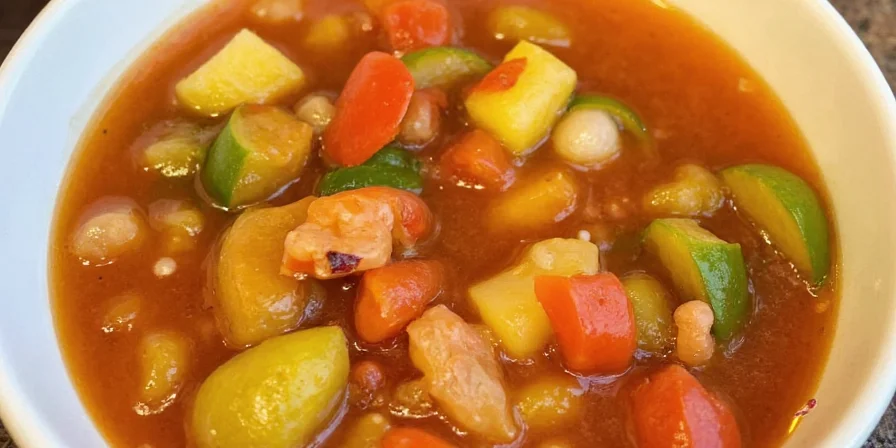









 浙公网安备
33010002000092号
浙公网安备
33010002000092号 浙B2-20120091-4
浙B2-20120091-4